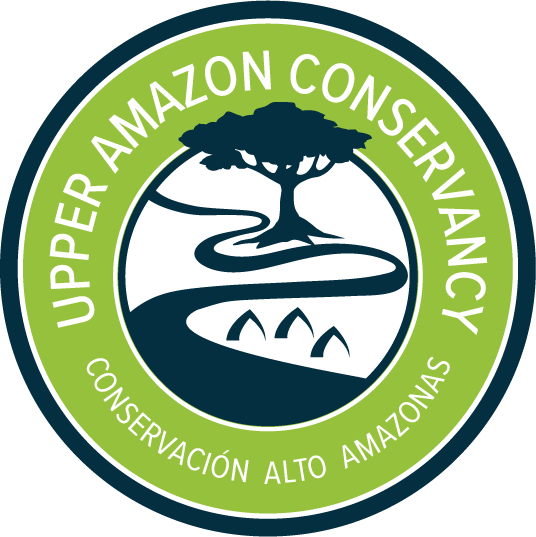Monitoring of the White Pichico Strengthens Conservation in the CCCY
Group photo of members from SERNANP, UAC, and native communities during the monitoring in the CCCY.
From February 20 to 23, 2025, a team of specialists from the National Service of Natural Protected Areas (SERNANP) and the Upper Amazon Conservancy (UAC), along with members of native communities, conducted a key monitoring effort in the Yurúa Communal Conservation Concession (CCCY). This area, managed by the Yurúa Communal Conservation Association (ACC-Yurúa), is composed of nine Indigenous communities: Dulce Gloria, San Pablo, El Dorado, Nueva Victoria, Santa Ana, Santa Rosa, Oori, Beu, and Koshireni.
The expedition confirmed the presence of the White Pichico (Leontocebus weddelli melanoleucus), a primate endemic to the Yurúa, and assessed the conservation status of the territory.
Pichico Blanco
White-mantled tamarin
Leontocebus weddelli melanoleucus
Photo: Glauco Oliveira
A Boost for Conservation and Local Development
Arsenio Calle, head of Alto Purús National Park, highlighted the importance of the monitoring, stating that it "raises the CCCY’s visibility at both national and international levels, promoting conservation initiatives and sustainable resource management for the communities of Yurúa, such as community-based tourism and scientific research." He also emphasized that protecting this species is crucial for preserving the Amazonian headwaters, which are essential for ecological balance and the provision of environmental services.
The Communities' Commitment
Kennedy Pérez, vice president of ACC-Yurúa and a member of the native community of Beu, underscored the active role of communities in conserving their territory: "The CCCY was created by nine Indigenous communities with the purpose of protecting their land. Here, we have a great diversity of flora and fauna, including timber species and medicinal plants yet to be discovered. We continue safeguarding these spaces to prevent illegal resource extraction or territorial invasion."
Findings and Next Steps
During the expedition, other primate species were also recorded, including the Red Howler Monkey (Alouatta seniculus), the Black-faced Spider Monkey (Ateles chamek), and the Black-capped Capuchin (Sapajus apella), as well as emblematic birds like the Grey-winged Trumpeter (Psophia crepitans) and reptiles such as the Yellow Boa (Eunectes deschauenseei). Trees of high ecological value, including Mahogany (Swietenia macrophylla) and Lupuna (Ceiba pentandra), were identified. However, threats such as poaching and illegal fishing near the Brazilian border were also detected, highlighting the urgent need to strengthen territorial surveillance.
Next actions:
Conduct periodic monitoring in coordination with SERNANP and UAC.
Strengthen territorial security in the CCCY.
Implement conservation strategies based on science and ancestral knowledge.
This effort not only provides key data for the protection of the White Pichico but also strengthens territorial management and the defense of natural resources in Yurúa, reinforcing the role of communities as leaders in conservation.






